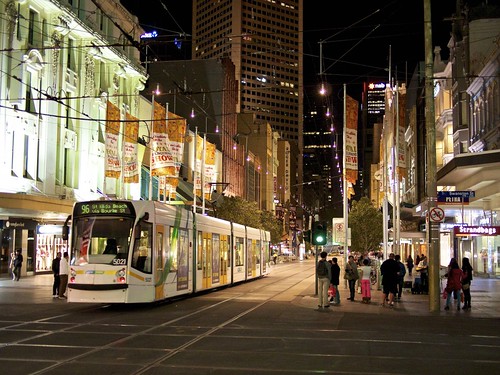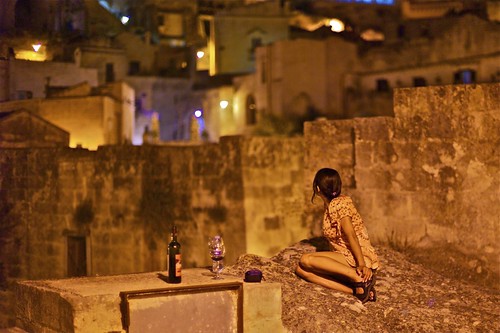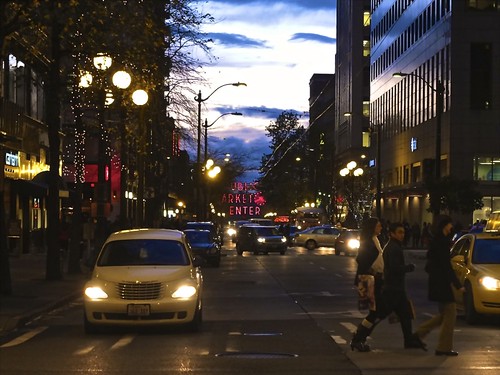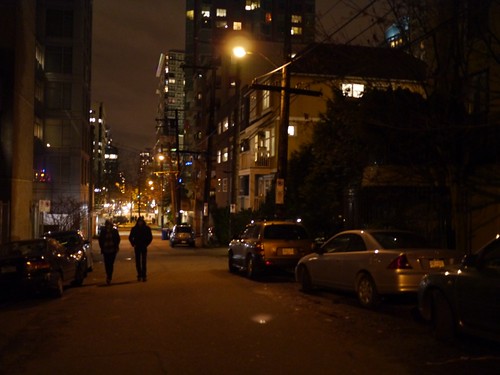How city lights change the way we experience places

Posted February 15, 2013 at 1:27PM
My favorite time of day is dusk: as the sometimes harsh glare of daylight recedes, sunset followed by a gradual darkening brings a touch of mystery, of possibility. As the lights begin to come on, a city or town is revealed in completely new ways – deficiencies sometimes masked, new elements emphasized.
Even in the countryside, it can be spectacular when the moon and stars come out and illuminate the landscape in an entirely different – if sometimes spooky – way. We don’t see everything around us; our attention is directed to certain things in a more pronounced way. There’s a reason why romantic and horror movies alike emphasize nighttime scenes, and a reason why advertisers use illuminated signs to capture our attention as they stand out from the darkness.
Although I wasn’t particularly deliberate about it at the time, I think that’s some of what I was capturing in my 2011 article and short photo-film, “The colors of a city evening.”
Perhaps my favorite nighttime photographer is my friend Chuck Wolfe, who connects the visual and verbal uniquely well on his blog, myurbanist, and the several other places he publishes (which tend to be the same ones that carry my own work). The photos presented here are from a current exhibit of Chuck’s work at Seattle’s Café Verité (Madrona location). (Some of Chuck’s work has been a springboard for my own, including in this article comparing our differing experiences of cities as kids in separate places.)
Chuck also has a new book coming out very soon. Urbanism Without Effort, which will be published first as an e-book, will contain these photos and many others as he illustrates and discusses how many of our best places evolve naturally. (I think Jane Jacobs would agree.) I was fortunate to see an early outline of the book and am really looking forward to it.
The preview from Island Press puts it this way:
“This highly illustrated E-ssential explores the idea that to create vibrant, sustainable urban areas for the long term, we must first understand 'what happens naturally when people congregate in cities---innate, unprompted interactions of urban dwellers with each other and their surrounding urban and physical environment' . . . Successful community, Wolfe argues, is among the first principles of what makes humans feel happy, and therefore city dwellers invariably celebrate environments where and when they can co-exist safely, in a mutually supportive way. Wolfe believes such celebration is most interesting when it occurs spontaneously—seemingly without effort. He believes it is critical to first isolate these spontaneous and latent examples of successful urban land use, before applying any prescriptive government policies or initiatives.”
Apart from the great photography likely to be in the book (only some of which will be night scenes), that’s a very interesting idea.
Related posts:
- Striking images of the illuminated city (May 20, 2011)
- Wow: animating the city with amazing, kinetic LEDs (November 30, 2012)
- City places that inspire romance (a gallery of walkability, part 2) (February 13, 2012)
- If you're out on your bike tonight, consider trying this (December 12, 2012)
- Gallup: nearly 4 in 10 Americans fear walking alone at night (November 10, 2010)
Move your cursor over the images for credit information.




